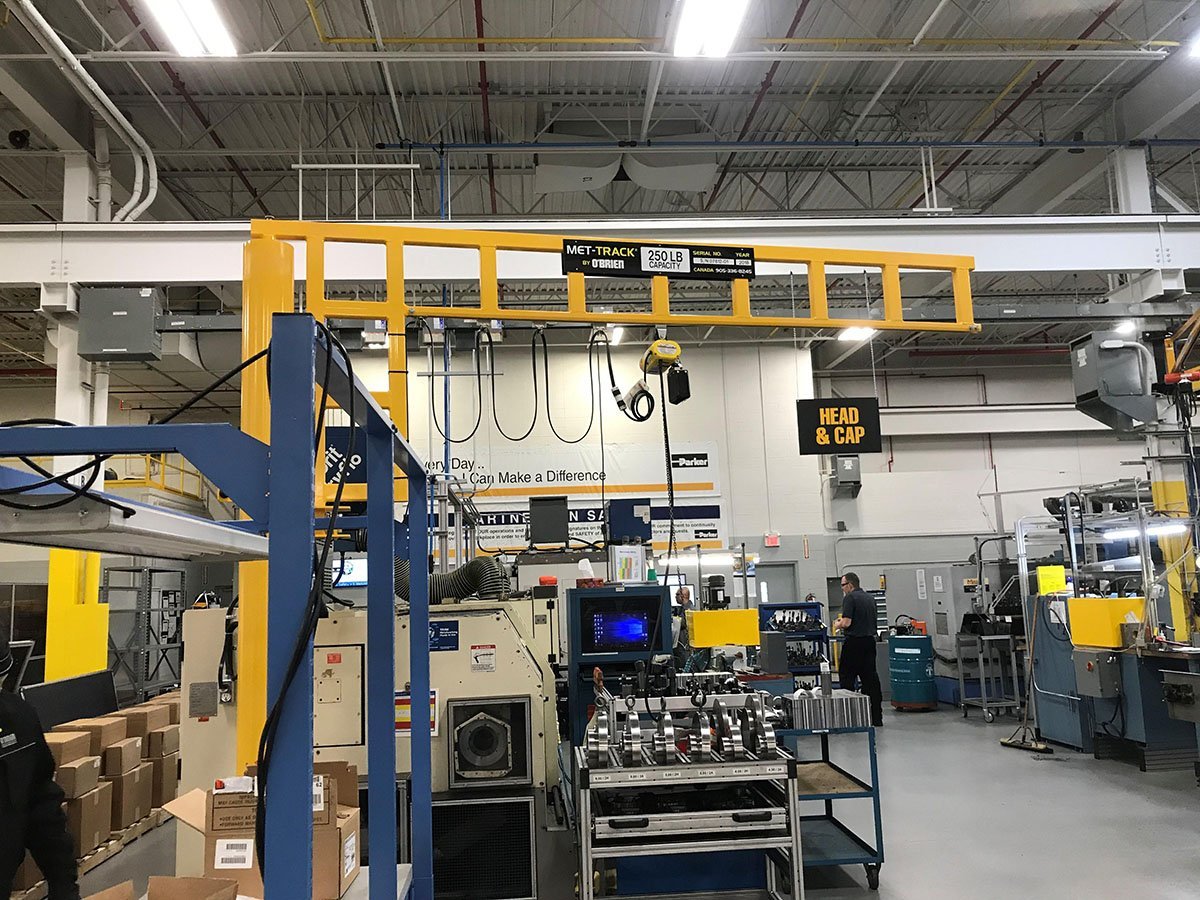Jib cranes are a mechanical handling solution that creates a safe process in which someone can reposition heavy loads around a workshop, facility or other facilities. Jibs cranes are usually made up of two main parts; the mast/mount (or pillar) and the boom (or track). The mast is the part of the crane that will be attached to a solid surface like a wall or floor to ensure that it can support itself and the weight of the product or material that you’re moving. You can think of the mast/mount as the support that the rest of the crane will attach to. The boom or track will then be attached to the mast/mount. This can be done in a number of ways depending on the use case. These are the two main parts of a jib crane, without these, you simply can’t have one.
The use of a jib crane is important to any environment that has products or materials that would be otherwise impossible to move. To illustrate this, Virtual College suggests that the average man should lift no more than 25kg to elbow height and close to the body at work, for women this falls to 16kg. However, a Met-Track jib crane has the capacity to lift up to 1000kg worth of weight at any one time.
How do jib cranes work
Jib cranes can come in a number of different ways in which they can be operated. Anything from manual to powered operation is available. So, depending on the type of jib crane you’re looking for, they’re operated in slightly different ways but work mostly the same.
The jib crane has 3 main motions that you’re likely to utilise during its use, these are rotation, transverse and lift motions.
Rotational motion – this is essentially the way in which the boom will spin around the pillar/mount.
Transverse motion – this is the movement of the hoist along the boom (horizontally)
Lift motion – this refers to the movement of goods or materials vertically (up and down)
If your jib crane is manually operated you’ll find that the lift motion (and sometimes the transverse motion) is done using a winch, hoist or pulley system, more often than not using a chain. However, if you opt for a powered jib crane, you can simply use the included controls to activate the movements mechanically.

Types of Jib Crane
Jib cranes can be used both inside and outside which means that this type of lifting equipment is a worthwhile addition to any industrial environment. There are many different styles and types of jib crane which means that no matter the use case, you’ll find them to be
FLOOR MOUNTED JIB
When a jib crane is floor-mounted, the pillar of the crane is situated on the floor. This style allows for the crane to swing typically up to 270 degrees, a full 360 degrees is also achievable with certain designs which means that the crane is able to pick up and move items within a certain radius in any direction.
WALL-MOUNTED
If your jib crane is wall-mounted, this generally means that you can have between 180 and 200 degrees rotation. So, you’ll be able to move items within a 200-degree arc depending on the mounting position and the surroundings of the mounting position.
OVER-BRACED
You’ll see that an over-braced jib crane has a support brace that helps to add structural support to the boom/track. This brace is situated over the top of the track and will share the stress and load of the items you’re lifting. This not only makes the crane stronger but will also help to increase durability
UNDER-BRACED
Under-braced jibs cranes are very similar to the above, the brace is just underneath the track instead of above it and works better for low headroom environments. Some people also prefer this style however, it doesn’t have a dramatic effect on performance. The reason that we offer both solutions is to ensure that, no matter the environment that you’re working with, your jib crane can function to its optimum capacity.
If you’re in need of a jib crane, or you’d like to know more about how we could help you, get in touch with us on 0115 932 7010 or email us at [email protected].